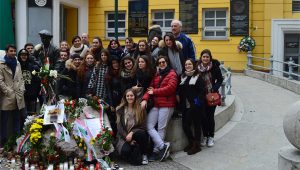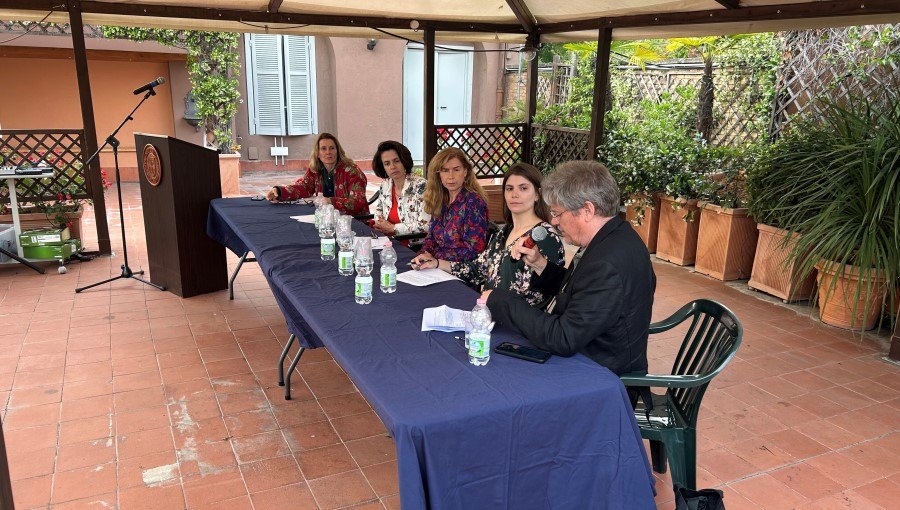Guarini Institute and International Relations Society Visit Budapest
On October 21-24, the Guarini Institute for Public Affairs and the International Relations Society jointly organized a visit to Budapest during the celebrations of the 60th anniversary of the 1956 Revolution. 24 JCU students participated, led by Prof. Federigo Argentieri.
The Revolution was a nationwide revolt against the government of the Hungarian People’s Republic and Soviet-imposed policies. The uprising, one of the most significant events of the entire 20th century, was the result of two combined factors: the oppressive nature of the communist regime imposed on the country in 1945-49 by Stalin, and the contradictory policies followed after the death of the Soviet dictator in 1953. “Workers, students and intellectuals, united according to Marx’ dream” (cit. Raymond Aron) took to the streets and overthrew the communist regime within one week, thanks also to the endorsement of the reform communist group led by Imre Nagy. After a few days, during which victory seemed possible, Soviet tanks came back in numbers to crush the revolution and restore a more moderate variant of the one-party system, which lasted until 1989.
Site visits included Memento Park, where statues of the communist period were stored after the regime collapsed, the Terror House Museum, the Corvin Alley – a legendary stronghold of the insurgents – and the Kisfogház prison, where many patriots including Imre Nagy, the Prime Minister, and his associates were taken into death row to be executed.
On the 24th the students heard three lectures by renowned Hungarian scholars: Prof András Nagy, Dr. Gusztáv Kecskés, and Dr. Stefano Bottoni. The lectures tackled past and present events of relevance linked to the 1956 Revolution: the treatment of refugees in 1956 and today, the ambiguous role played by the UN under Dag Hammarskjöld and the impact in a neighboring country, Romania. Prof András Nagy, who had also co-lead the students’ tours over the weekend, discussed the difficulties encountered by the “Hungarian question” at a time when the United Nations was apparently controlled by the Western powers, but where the USSR had gained considerable yet invisible influence.
Dr. Gusztáv Kecskés underlined the few similarities and the many differences between the 1956 Magyar refugee exodus and the current one, mostly Syrian and Middle Eastern: Cold War propaganda, opportunities and solid economic contexts worked in favor of a welcoming attitude by Western countries towards Hungarian refugees, while political confusion and uncertainties are contributing to diffidence and hostility towards Middle Eastern ones.
Last but not least, Dr. Stefano Bottoni explained the “Hungarian spillover” in a neighboring country, Romania, which was resolutely hostile to Hungary in terms of past conflicts but tended to appreciate the struggle for freedom waged by the Hungarians.
Prior to the trip, the students were prepared by four evening sessions. Prof. Argentieri, who is an expert on Hungary and Eastern European affairs in general, has participated or will participate in three international conferences – Rome, Venice and Bologna – devoted to the 1956 revolution and its long term repercussions.






